Figure 1. Passiflora taxonomic subgroups represented at La Selva.
These photos illustrate the diversity of habits and leaf forms among the principal subgeneric sections , but there are also great differences in forms of stems, stipules, extrafloral nectary morphology and placement, leaf pelage, pollination syndrome, attractiveness to ant/wasp predators, chemical ecology and other traits. Most neotropical sections not represented (30 sections in all) at La Selva are adapted to seasonally dry climates or higher elevations (Ulmer and MacDougal, 2004).
|
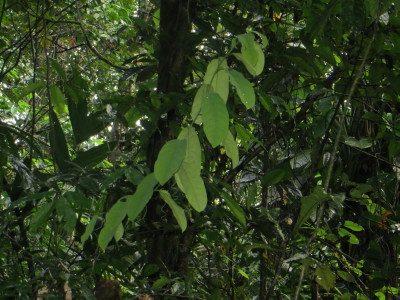 |
 |
| Subgenus Astrophaea, Section Capreolata, Passiflora pittieri. Primary forest. These are woody species with leaf shape typical for a rainforest plant, with drip tips. Leaves are thick and tough, and may persist for years in the forest understory. P. pittieri plants tend to be shrubby understory species rather than canopy vines (see P. ambigua, below). |
Subgenus Deidamioides, section Tryphostemmatoides, Passiflora arbelaezii. Forest, primary and successional. These Passiflora have branched tendrils, the tips of which are able to grow adhesive pads for climbing tree trunks (Bohn 2015). The tendril branches also bear flowers, and in the case of this species, tiny flower buds modified into structures that resemble butterfly eggs. |
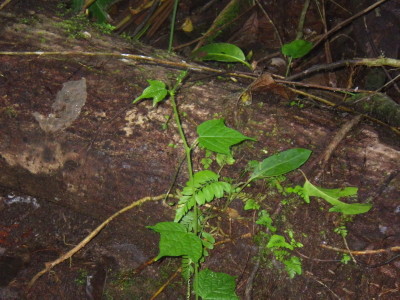 |
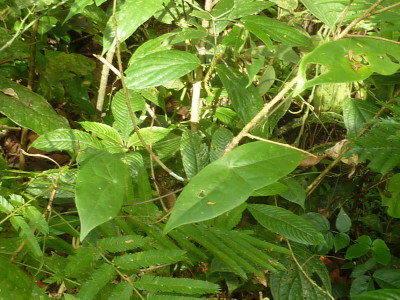 |
| Subgenus Decaloba, section Bryonioides, Passiflora lobata. Forest, primary and late successional. Byonioides species usually have leaves shaped like Bryonia (Cucurbitaceae), and are protected by hooked hairs (trichomes) that catch on the cuticle of non-adapted caterpillars and kill them. Most species including P. lobata tend to be herbaceous and fragile. |
Subgenus Decaloba, Section Cieca, Passiflora megacoriacea. Forest, late successional. These plants have slender wiry stems and unusual 2-lobed leaves. The leaves are thick, leathery and shiny, and can persist for years in the forest understory. |
|
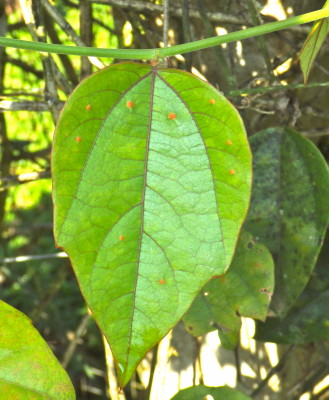 |
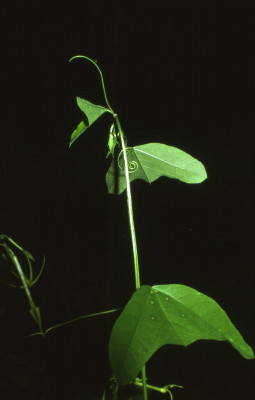 |
| Subgenus Decaloba, Section Auriculata, Passiflora auriculata. Clearings, early successional. These Passiflora have large petiolar nectar glands as well as glands on the leaf blade, and leaves are slightly three-lobed, thick and shiny. |
Subgenus Decaloba, Section Decaloba, Passiflora biflora. Clearings, early successional. Members of section Decaloba (over 100 species) have leaves with lateral lobes and have nectar glands in a straight line on the leaf blade. Another section Decaloba species, P. lancearea, is found at higher elevations at La Selva. |
|
 |
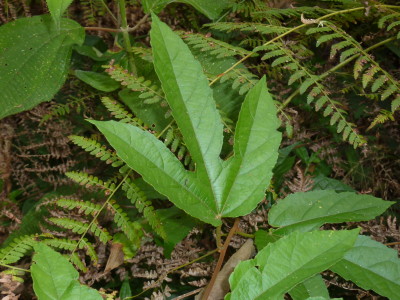 |
| Subgenus Decaloba, Section Xerogona, Passiflora costaricensis. Clearings, early successional. Xerogona species' leaves have two pointed lobes and distinctive spindle-shaped fruit. The leaves lack nectar glands and are often hairy. |
Subgenus Passiflora, Section Coccinea, Passiflora vitifolia. Forest, primary and successional. Coccinea species have serrated leaves and colorful red flowers pollinated by hummingbirds. |
|
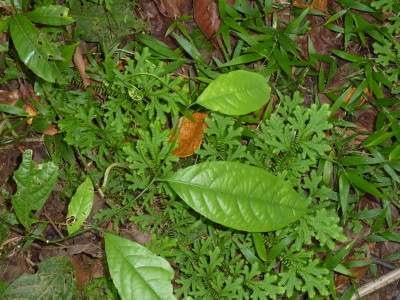 |
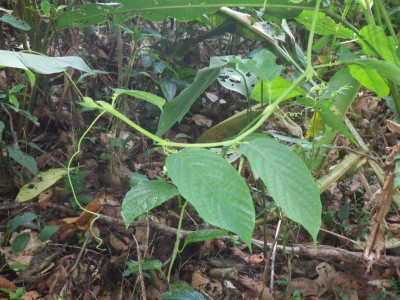 |
| Subgenus Passiflora, Section Laurifoliae, Passiflora ambigua. Primary Forest. Like many rainforest plants, Laurifoliae have simple laurel-shaped leaves with drip tips. Although these plants have similar leaf shape to P. pittieri (see above), these are canopy vines rather than shrubby understory plants. Another section Laurifoliae species, P. nitida, is found at higher elevations at La Selva. |
Subgenus Passiflora, Section Quadrangulares, Passiflora quadrangularis. Widely cultivated. These species have 4-angled stems with very large leaves and large petiolar nectar glands. Very fast-growing. |
|
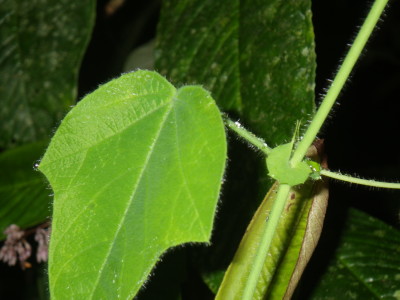 |
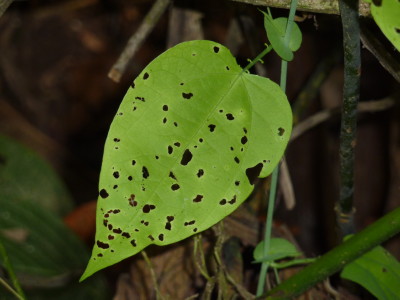 |
| Subgenus Passiflora, Section Granadillastrum, Passiflora menispermifolia. Late successional forest. Although this species and P. oerstedii (at right) share the same taxonomic section, they are radically different in appearance, chemistry and herbivore ecology (never eaten by flea beetles at La Selva). |
Subgenus Passiflora, Section Granadillastrum, Passiflora oerstedii. Clearings and early successional. Members of this section have distinct stalked nectar glands on the petioles. Glands of P. oerstedii have been found to be attractive to parasitic egg wasps as opposed to ants (Smiley 1978). Leaf in this photo has been partially eaten by flea beetles. |
|
